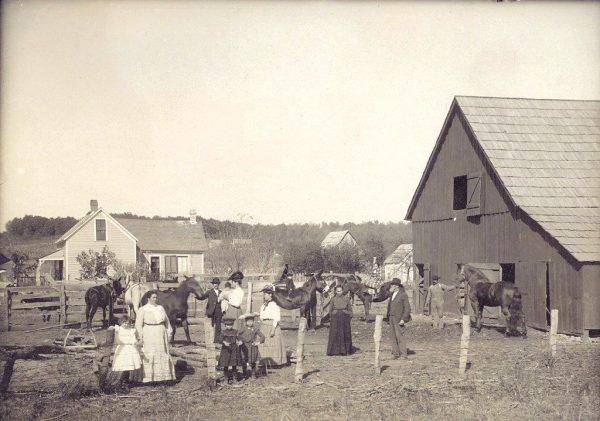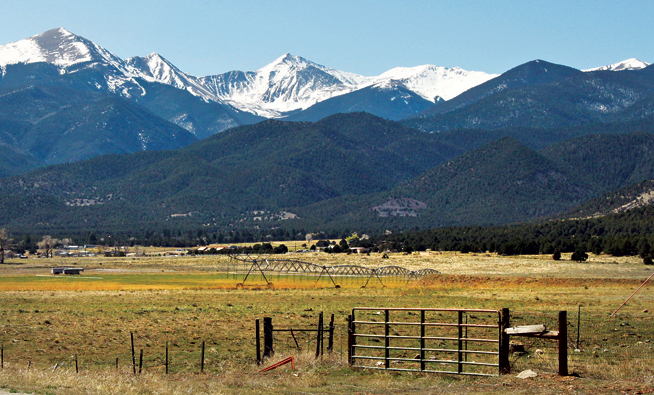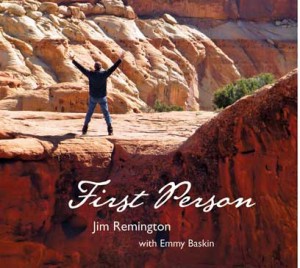By Ron Sering
Leaving Bighorn Sheep Canyon and heading west toward Coaldale, the first thing you notice are the fields. In the spring, enormous center pivots distribute runoff from the Sangres, turning the fields green with alfalfa. These fields have been worked since homesteaders arrived in the Pleasant Valley in the 1800s. That could soon be changing.
Among the largest ranches is the 160-acre CB Ranch near Coaldale. Assembled from various smaller holdings by Kansas cattleman Clint Branch, after his passing the property was put on the block, along with the senior water rights. The property was eventually purchased by the city of Security. “It seemed like a good fit,” said Roy Heald, District Manager of the Security Water and Sanitation District.
This marks a growing trend among Front Range municipalities. Some estimates call for Colorado’s population to double by 2050, with the majority settling along the Front Range. The gap between water needs and available supply continues to widen, with a possible shortfall of 500,000 acre feet by 2050. To stay ahead of the growth curve, some municipalities are speculating on the purchase of water rights from mountain communities, along with the accompanying land.
“If you want water, you take the land, too,” said Kristie Nackord, Director of Development for the San Isabel Land Protection Trust. The SILPT attempted unsuccessfully to acquire the land under a conservation easement, which would have preserved the land in its current state. Nackord has a personal stake in the acquisition: her horse property is directly adjacent to the ranch.
[InContentAdTwo]
Recent similar transfers have met with mixed results. In 2008, the Pueblo West Metropolitan District (PWMD) acquired Hill Ranch west of Salida. The water was converted from agricultural to municipal use, bringing an end to irrigation activities. The ensuing “dry-out” killed the water-loving vegetation that had once thrived there, resulting in the proliferation of nuisance weeds such as tumbleweeds, which blight the land and cause problems with windblown weeds building along fence lines and culverts.
PWMD agreed to re-vegetate the area, but it’s not as easy as it sounds. A century of irrigation changed the underlying ecosystem, making it difficult to reintroduce native grasses. The project is still in progress.

What makes CB Ranch different is that the transfer is still in its early stages. “The water is gone, so what do we do now?” Nackord said.
Several options exist, including a possible subdivision of the land into smaller parcels, which Security could then sell to recoup some of their investment. The issue, Nackord said, is “Where can we find an agreeable solution for all?” In a meeting with the board of the Security Water and Sanitation District, Nackord proposed a three-item “wish list”:
• Transfer the land to a conservation easement under the auspices of the SILPT, or a similar arrangement that keeps the land intact, without subdividing it. “The land has significant value as open prairie,” Nackord said. A conservation easement provides a regular stream of income, which would enable Security to recoup part of their investment in the land while still using the water.
• Consider an interruptible supply agreement. As contrasted with an always-available firm supply, an interruptible supply is available to the municipality only during drought conditions. “Our goal is to keep the land as productive as we can,” Nackord said. “If Security needs the water, they can transfer the water for their needs, and fallow the land for a year.” Once drought conditions cease, the land is put back into agricultural use.
• Assure proper mitigation to prevent the growth of noxious weeds.
For now, a local family leases and works the ranch. The rights transfer is set to appear in water court sometime this spring. The actual diversion of the water still lies in the future. “We really don’t have a schedule yet,” Heald said.
But Security has made a significant investment with the purchase, and Heald said, “you don’t invest money and expect to lose it.” The district has opened up a dialogue with the SILPT about how to accomplish making use of the land. “Nothing is on the table yet, but nothing is off, either.”
For More Information:
Colorado Water Plan
Colorado is in the midst of a growth spurt, and to plan for this growth, as well as to fulfill the state’s downstream commitments, the Colorado Water Conservation Board drafted a unified water plan. The plan’s second draft is set for release on July 15, with a public comment period ending on Sept.17. To view the current draft, and to stay informed on plan progress, go to: www.coloradowaterplan.com
San Isabel Land Protection Trust
The San Isabel Land Protection Trust is a nonprofit, non-political conservation organization that works with landowners to protect land and water in Custer, Fremont, Pueblo and Huerfano Counties through conservation easements. For further information on the CB Ranch purchase or the SILPT’s activities, contact:
San Isabel Land Protection Trust
PO Box 124
Westcliffe, CO 81252
719-783-3018
www.sanisabel.org
Ron Sering lives in Howard with his wife, artist Christine Marie Davis, and thinks his well produces some of the finest water he’s ever had.



Great article. Thank you for giving voice to a rural community and a very important issue for our state.